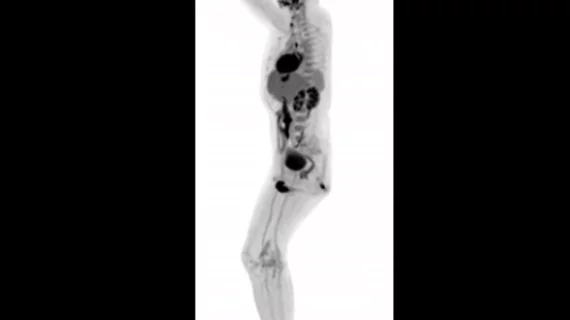The world’s first total-body PET/CT scanner is associated with improved image quality and quicker scan times, according to findings published in The Journal of Nuclear Medicine.
The scanner, developed by the EXPLORER Consortium, allows providers to image the patient’s entire body, including all tissues and organs, at the same time. It gained FDA clearance back in January.
“Building a total-body PET/CT scanner started off as a challenging technical idea,” Simon R. Cherry, PhD, a professor at the University of California, Davis, and co-leader of the EXPLORER Consortium, said in a prepared statement. “But very quickly we identified a range of research areas where we thought this could be hugely impactful, for example, by creating the ability to look kinetically and simultaneously at new drugs and tracers in all the tissues of the body to enable measurement of whole-body pharmacokinetics of labeled drugs and probes. We also thought we could potentially extend some of the successes we have had with PET in oncology to other systemic diseases, such as inflammation and infection.”
Researchers shared multiple case studies in The Journal of Nuclear Medicine. In the first case study, a subject was injected with 290 MBq of 18F-FDG and scanned 82 minutes after the injection. Images from 20 minutes, 10 minutes, 5 minutes, 2.5 minutes, 75 seconds, 37.5 seconds and 18.75 seconds were compared. The team found images at 37.5 seconds were “of diagnostic quality” and images at 18.75 seconds “were of arguable diagnostic quality, indicating a possible reduced scan time with total-body PET.”
A second case study involved imaging a patient one, three, eight and 10 hours after being injected with 18F-FDG. Even 10 hours later, the authors noted, “images still appeared to be of diagnostic quality.”
A third case study revealed that a low dose (80 MBq) of 18F-FDG could help users image a single organ without a high among of image noise. The fourth and final case study showed that a patient given just 25 MBq of 18F-FDG resulted in “good quality images” 50 minutes after injection.
“Now that the total-body PET scanner can make its way into the clinical arena, it will be interesting to see how nuclear medicine and molecular imaging professionals utilize it,” Cherry said in the same statement. “Will they use the tool to enable a quicker clinical workflow now that they can achieve the same quality images in 30-60 seconds as compared to 20 minutes? Will they fully exploit the sensitivity of the scanner and conduct 10-15 minute scans to obtain extremely high quality images?”

